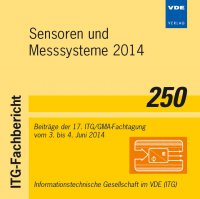Liquid metal flow mapping with a self-calibrating ultrasound array Doppler velocimeter
Conference: Sensoren und Messsysteme 2014 - Beiträge der 17. ITG/GMA-Fachtagung
06/03/2014 - 06/04/2014 at Nürnberg, Deutschland
Proceedings: Sensoren und Messsysteme 2014
Pages: 5Language: englishTyp: PDF
Personal VDE Members are entitled to a 10% discount on this title
Authors:
Thieme, N.; Nauber, R.; Radner, H.; Beyer, H.; Buettner, L.; Czarske, J. (Laboratory for Measurement and Testing Techniques, Faculty of Electrical and Computer Engineering, Technische, Universitaet Dresden, 01062 Dresden, Germany)
Dadzis, K. (SolarWorld Innovations GmbH, Berthelsdorfer Str. 111A, 09599 Freiberg, Germany)
Paetzold, O. (Institut für NE-Metallurgie und Reinststoffe, TU Bergakademie Freiberg, Leipziger Str. 34 , 09599 Freiberg, Germany)
Abstract:
The quality of silicon ingots for photovoltaics can be improved by applying time-varying magnetic fields during the solidification process. Their influence on the heat transfer in the molten silicon has been simulated with numerical models, however, they need validation through measurements in model experiments. Commercial flow instrumentation systems usually utilize only one or a few single element probes that are operated strictly in sequential multiplex. This leads to low frames rates and limits their applications to quasi-static flow fields, while a comprehensive flow mapping of complex and unsteady flow phenomena is hardly possible. We present an ultrasound array Doppler velocimeter (UADV) to measure flow velocities in opaque media. For model experiments using containers with a 220 mm × 220 mm base the UADV is equipped with four ultrasound arrays with 42 elements each. Due to its modular set-up various arrangements of the ultrasound arrays are feasible, for example, measuring two 2d-2c flow fields. Using time and space division multiplexing, the frame rate can reach up to 8 fps. The signal processing is done by a FPGA enabling long running measurements. The 2d-2c flow fields are composed of two orthogonal 2d-1c flow fields. This composition requires an exact knowledge of the relative positions of the ultrasound arrays. The relative positions are determined by a novel spatial self-calibration that uses mutual time of flight measurement. The UADV was applied to model experiments at room temperature using a container filled with liquid GaInSn (melting point approx. 10deg C) and an externally applied magnetic field. An outlook on future non-isothermal model experiments using a gallium melt in a container with a 220 mm × 220 mm base, mainly relevant to the growth of photovoltaic silicon crystals, is given.


